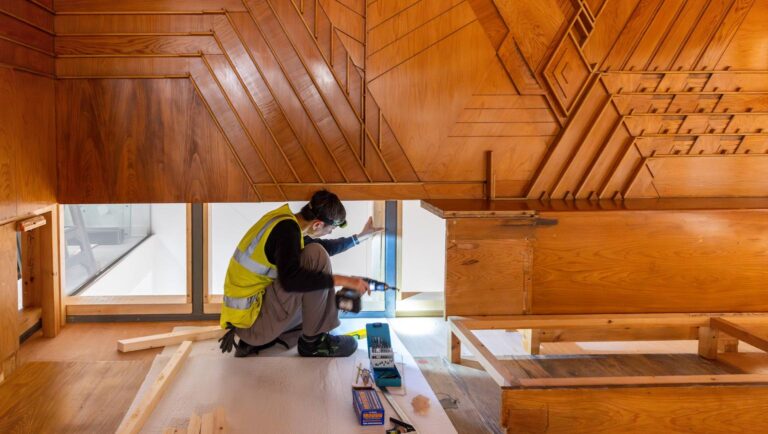
History of the V&A East Storehouse
The twist and turns of post-Olympics decision-making that brought 250,000 objects to Here East
How did you meet each other?
Marie: We met at a non-reality party, far, far away on the planet fantasy. Money doesn’t matter there, its full of eccentrics, there are no grey square rectangular buildings, they’re all round and colourful. Everything is illogical.
How long have you been here?
M: The Olympics finished and we came with our suitcases. We were next door under the big tunnel for three months and then we got this space. I spoke to the landlord, I begged and begged and we got it.
It was once said that Hackney Wick & Fish Island had the highest concentration of artists in Europe. But we’ve seen that dwindle.
Olivier: Not a dwindle, it’s been a massacre. We were lucky with our landlord. He didn’t sell out and kick everyone out. A lot of artists weren’t so lucky. They’re talking about bringing the artists back, but I don’t really see that happening.
M: You have different creatives here now. This has been modelled for a technology creative, and we’re more physical creatives. So the statement that Hackney Wick has the most artists, it’s how you define the artists, I think. It was more experimental and physical and dance and music when we moved here. Now when I’m meeting new people, they’re artists, but computer-based. We’re very much sensory artists and we want you to get knowledge from your senses.
What are you working on at the moment ?
M: A pink odd-looking lamb. But I want to do it like 10 foot big. It will be a big inflatable up in the air.
O: We’re also thinking of doing fashion out of patterns. Marie was doing a lot with patterns during lockdown. It was a bit dreary, so to perk us up we were doing colourful stuff on t-shirts and masks.
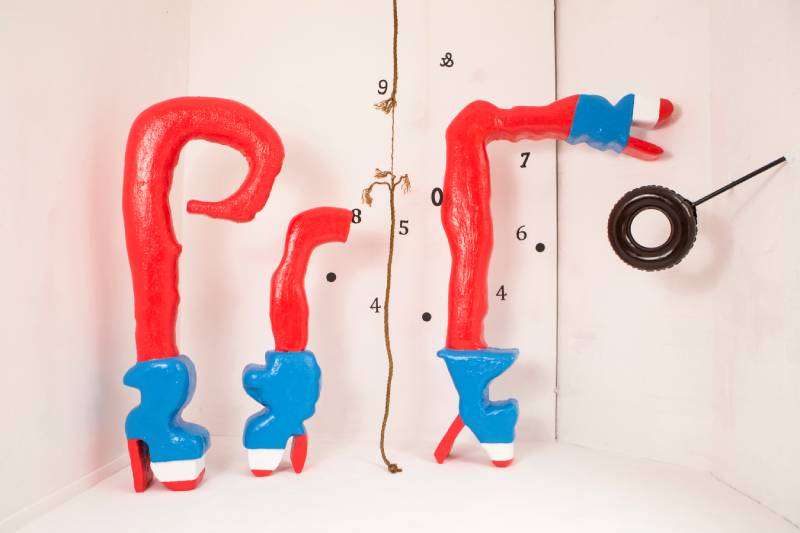
The cute Japanese aesthetic Kawaii was supposedly a reaction to gentrification in Tokyo. Did what’s happening locally draw you to use it into your own work?
M: Gentrification started in Japan a lot sooner than here, and one reaction is people dressing cute and colourful. Like here, juxtaposition is always happening. I took Olli to Japan and he was obsessed with the colours and the cuteness, which then started to become more his thing in his own work.
O: It’s an odd relationship because I had an idea of manga when I was growing up in the 80s, so I’m a bit retro in that aspect. At the beginning of my practice I was trying to replicate the perfection of the Japanese. Then I found I could keep the spirit of the happiness and grotesque of Kawaii, but I could make it the way I want to, which is slightly imperfect. I like the childishness and the colour of Kawaii. If you keep that and make it playful, then that works for me.
M: I studied architecture during my PHD, and the built environment really affects our behaviour. If a questionnaire is done in two years about the people living in Fish Island, it would be very interesting to see if their preferences have changed from before they moved in. Architecture affects beauty and order.
O: I can see the architecture is very stern, but when I look at the Bagel Factory, and I see people decorate the inside of their flats, it’s quite creative. Maybe it’s a reaction to so much sternness around them.
What keeps you working together?
O: Well we tried to work with a lot of other people but that didn’t work out. We don’t judge each other either and we don’t critique. I’m more technical and practical, and Marie is more conceptual. So sometimes she will come up with an idea and I will make it work within certain parameters. Or I will come up with an idea and Marie will push it further.
M: I think it’s the imagination; we make it fun. We support each other, and it’s good having separate practices, too. There’s more humour in the DollyOlli than our separate practices, which go a bit darker.
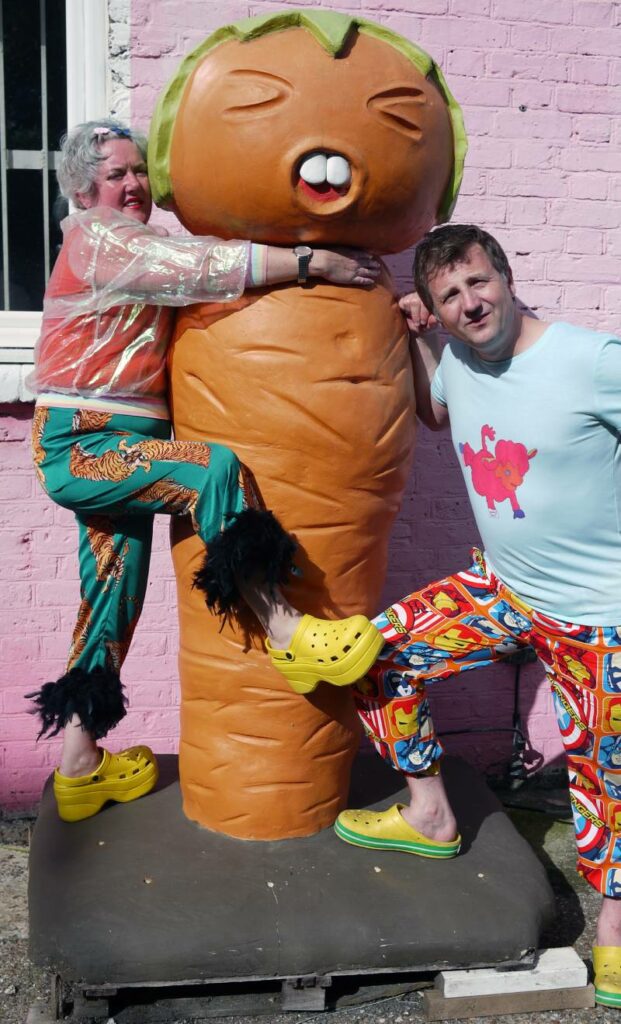
Do you have any particularly memorable moments from living and working here?
O: We did a lot with the Hackney WickED festival, and the first two years were great. People could come in and interact with the sculptures, so I really learned from that. When I did my show in Stour Space, I was building one of the sculptures in the space, so I could interact with the audience and I really enjoyed that.
M: I think for me it was the parties we used to have. Fear of Fluffing would set up and go out on the street and you’d get the general public in awe. There would be such a crazy atmosphere.
Is there somewhere local that you’d like to exhibit your work?
M: I’d like to do something more comic in Fish Island with those big ugly buildings. I want to change it. So something like that lamb I’m working on, placed really high on top of a skyscraper. We did do a piece at the beginning of 2016 where we made three coffins out of London Brick called ‘You Will Never Afford Me’. It was having a go at all the gentrification, and I was taking the mickey out of the word mortgage.
O: I don’t want to sour the mood, but we were trying to get art into Hackney Wick Overground station, because they had that tunnel sitting empty for two years. We had one meeting and they never got back.
M: The architecture that they ended up with, I don’t think is a good representation of the occupation of this area. It was a representation of the new builds; grey concrete with some lines in it.
O: If I had my say, I would do something in the old entrance for the Overground, where you’ve got those ramps that have been derelict with all the grass growing all over. I’d love to put something there and I think a lot of people would be interested in it.
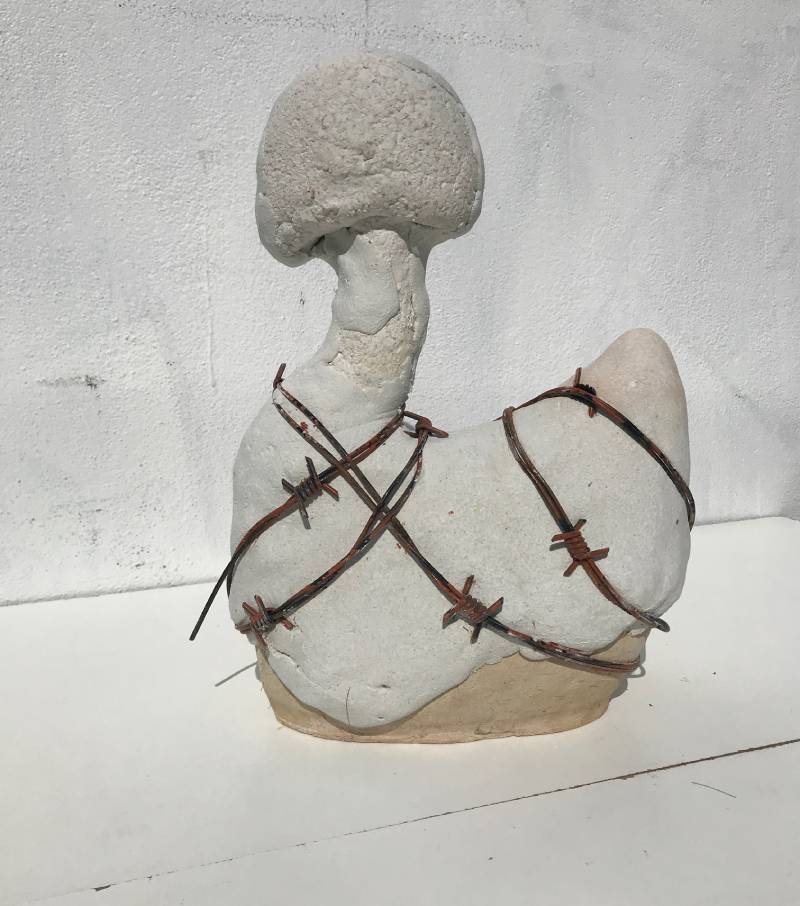
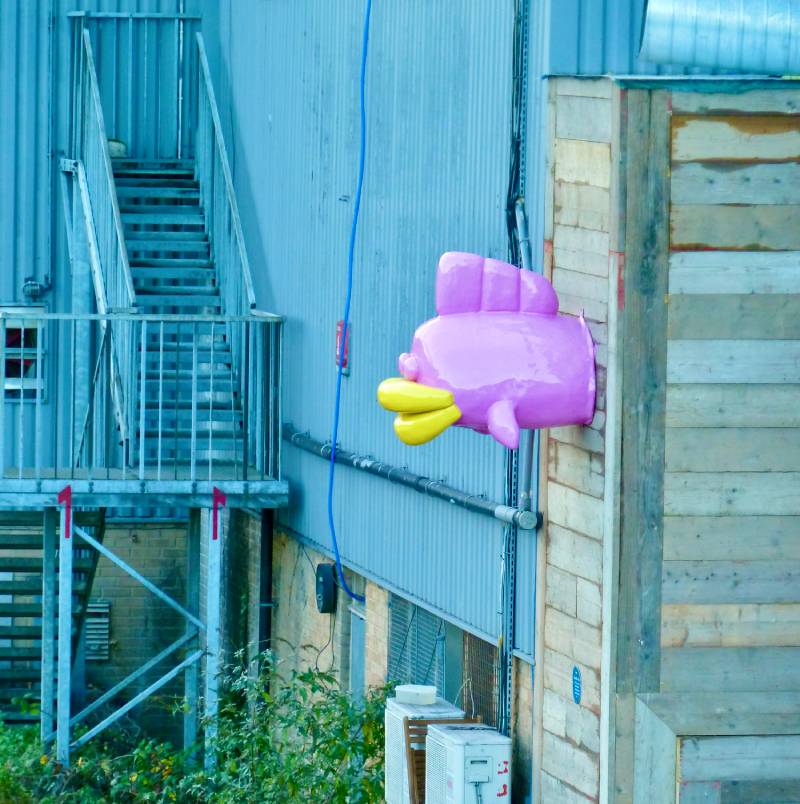
Is there something that you really want people to get out of your artwork?
O: I’m trying to play on ambiguity and uncertainty. So sometimes you can’t really get the meaning straight away. With Covid we all suddenly became quite aware that the certainty you have in your life can just shift completely. But that was something I was exploring before in my practice and lockdown reinforced everyone’s sense of uncertainty and ambiguity. If I want people to get one message from our work, it’s that if you’re not too sure what it is, just use your imagination to make the meaning.
M: I think that’s really important too. I have some work currently showing at the Bethlehem Museum of the Mind, which is based inside in a mental health schizophrenia hospital. It’s called ‘The Rules are in your Head’ that’s to do with colour and beauty. I looked into order and minimalism a lot, and when you see order everyday it actually affects your behaviour. For example, in that Fish Island architecture, you see order, squares, rectangles. That affects us when we then see non-order and chaos. I think the attraction in Hackney Wick is the warehouses and the graffiti. It’s chaotic and we all need chaos. We want everyone to interact and smile with our work. I hate when people say you can’t touch a sculpture, because my sense of touch might be stronger than my eyes. Our public spaces have become ridiculously serious, but why? It doesn’t need to be like that. When you lighten up the public space, you’ll find that people are happier.
Find out more about DollyOlli at dolliolli.com


The twist and turns of post-Olympics decision-making that brought 250,000 objects to Here East
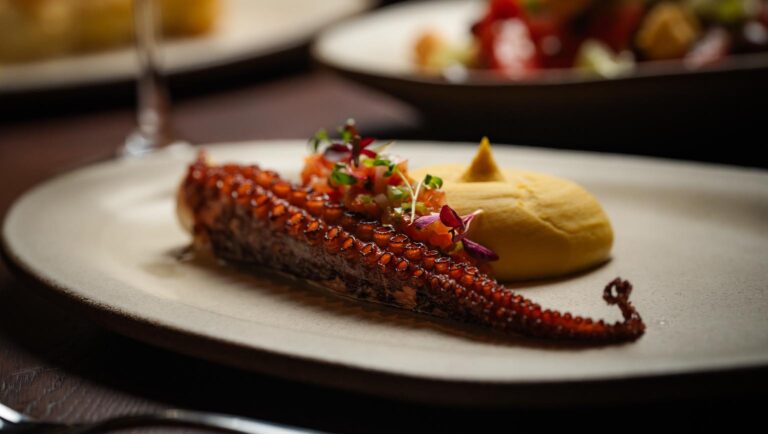
This thoroughly modern restaurant may be far from the taverna, but it’s filled with Mediterranean flavours, and much more
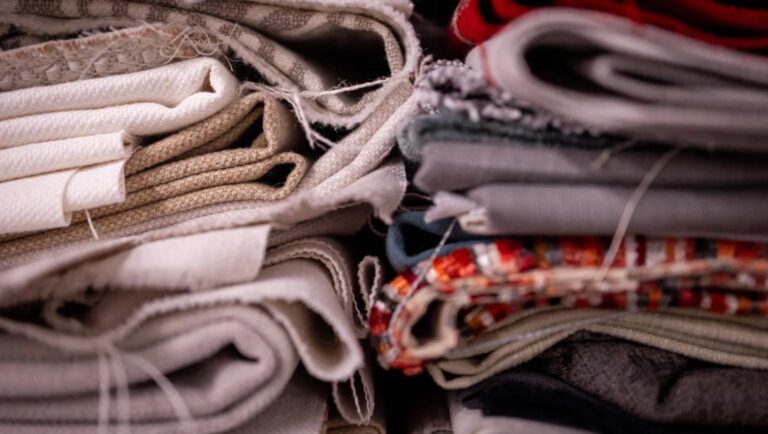
How Hackney’s growing textile reuse infrastructure is inspiring the eco-conscious fashion designers of tomorrow
A joint venture in collaborative local media from:
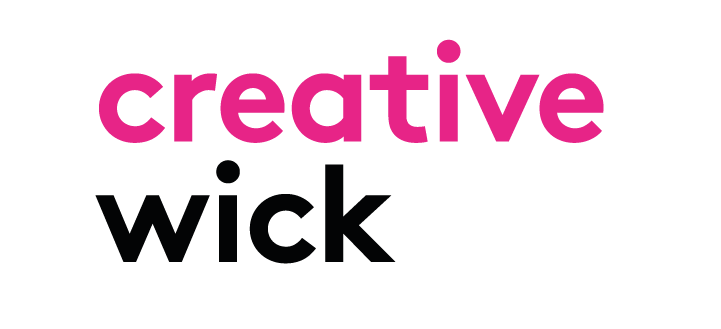

In partnership with

Regulated by IMRESSS, the Independent Monitor for the Press CIC.
For more info on our complaints policy, or to make a complaint, visit FAQ.
